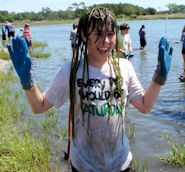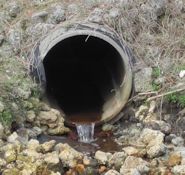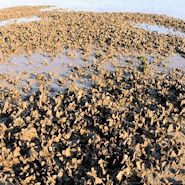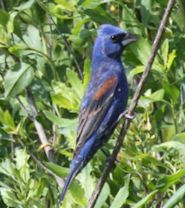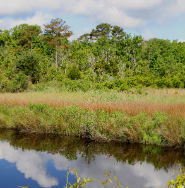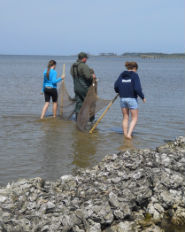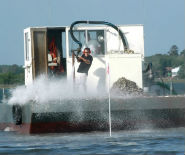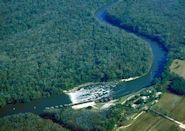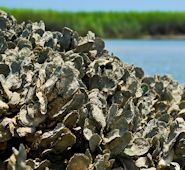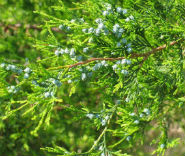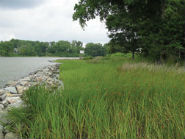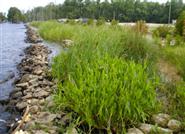People will gather in August at the N.C. Coastal Federation’s Morris Landing Preserve on Stump Sound to help build an oyster reef and let their hair down afterwards.
Habitat Restoration
Coming to the Aid of an Abused Creek
The N.C. Coastal Federation expects to pay for and begin work this fall on a project to solve a vexing environmental and aesthetic problem: Turning two unsightly ponds in western Carteret County into wetlands to protect an imperiled creek.
The Value of Restored Oyster Reefs
Researchers are learning some surprising things about the value of created or restored oyster reefs as marine habitat.
Putting the Pieces Together at North River Farms
The N.C. Coastal Federation put in place one of the final pieces of the puzzle that will eventually restore water quality and provide public access to thousands of acres of restored wetlands at its North River Farms property.
Coming Full Circle in Down East Carteret
Another 400 acres of wetlands will soon be restored in a monumental project that the N.C. Coastal Federation and several partners started more than a decade ago to turn 6,000 acres of farmland in Carteret County back to wetlands.
Jockey’s Ridge Makes Fetching Classroom
Jockey’s Ridge State Park is a place where kids learn about yucca plants and pennywort, blue crabs and croaker and all about the watery world around them.
A New Approach to Rebuilding Oyster Reefs
The state and commercial fishermen on Ocracoke will try a new method to replenish oyster reefs around the island in hopes of reducing losses to sponges, crabs and other predators.
We Love Estuaries. How About You?
On this Valentine’s Day, we thought we’d give a little love to the state’s vast labyrinth of coastal marshes. We’re part of a national campaign to stand up for estuaries.
Living Shoreline Permitting Still a Hassle
Though research increasingly supports the value of living shorelines over bulkheads and other types of manmade erosion-control methods, state and federal officials still struggle with streamlining the permitting system for them.
Old Christmas Trees Can Keep On Giving
The pretty Christmas tree that was, just a couple of days ago, the center of the family celebration will soon be… well, trash. But it doesn’t have to be. Trees can be recycled to build sand dunes and replenish soil. Backyard birds will like them, too.
Fish Can Now Get Around Old Obstacle
For almost 100 years, spawning fish heading up the Cape Fear River ran into an unmovable obstacle called Lock and Dam No. 1. Now a passage that resembles natural rapids gives them a chance.
Pelican Award Winner: The Royal Order of Oysters
J. Taylor Ryan and his Royal Order of the Honorary St. James Oyster build oyster reefs, keep track of oyster spat and perform other, assorted deeds to improve the coastal environment.
Get Paid to Plant Juniper
The N.C. Coastal Federation and the U.S. Fish and Wildlife Service have a deal for you. They’ll pay 80 percent of the cost of planting rare Atlantic white cedar on your property.
Living Shorelines Require Careful Planning
Living shorelines offer many benefits over the wooden and rock walls that are customarily used to control erosion along estuarine shores. But researchers say they have to be carefully planned to maximize their natural elements.
Living Shorelines: The Natural Alternative
Techniques to control erosion that use oyster shells and marsh grasses are often better alternatives than the traditional wooden bulkhead or rock seawall.
From Lifeless Shells to a Vibrant Reef
Groups like the N.C. Coastal Federation spend a lot of time and effort building oyster reefs to create marine habitat and improve water quality. But do the reefs really work? Do the lifeless piles of shells actually become a sort of living organism?

